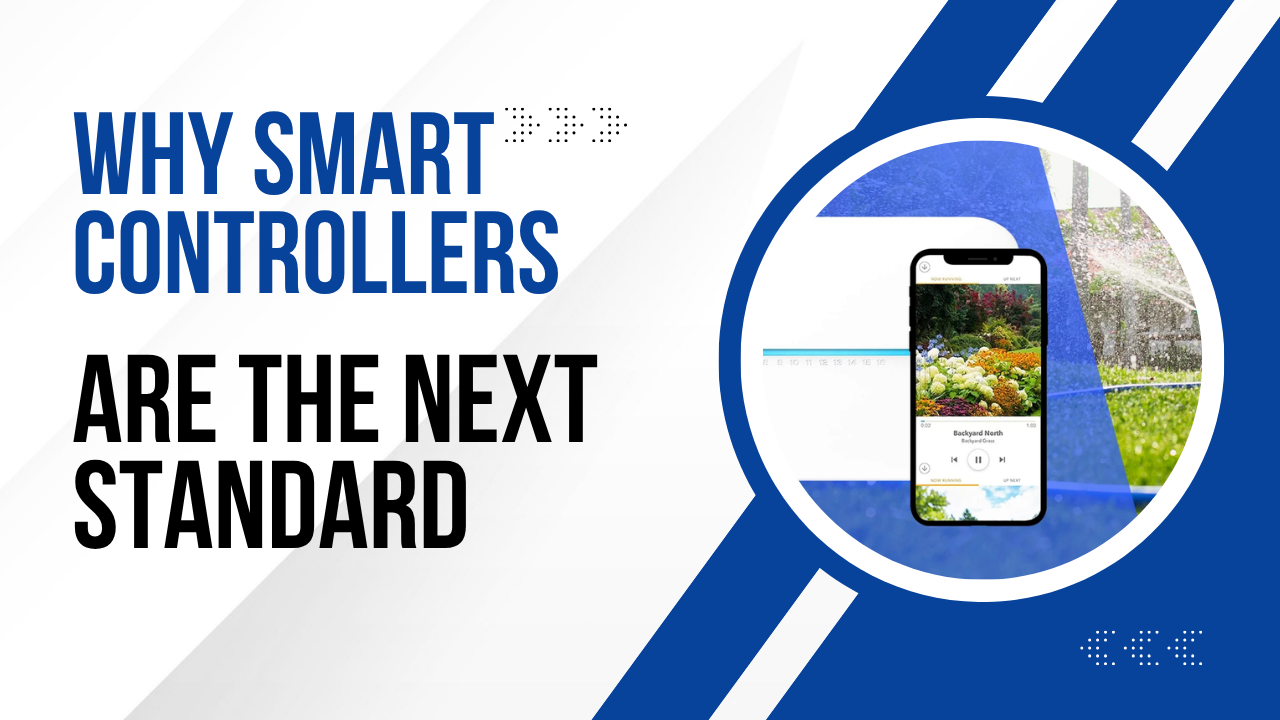Blog Post
-
Why Smart Controllers Are the Next Standard in Water-Efficient Irrigation
June 18, 2025

Introduction
Water conservation has never been more important to the landscape and irrigation industry. With tightening regulations, climate variability, and growing public awareness, water efficiency has become a top priority for contractors and homeowners alike. At the center of this shift is one powerful tool: the smart irrigation controller.
Smart controllers, especially those with WaterSense certification, are rapidly becoming the new standard for efficient irrigation design. When combined with digital planning tools like irrigation software, sprinkler design tools, and sprinkler system design tools, these controllers help landscape professionals create systems that are not only compliant—but also more sustainable and cost-effective.
1. What Are Smart Irrigation Controllers?
Smart controllers are irrigation timers equipped with technology that adjusts watering schedules based on real-time weather, soil moisture, and plant needs. Unlike traditional controllers, which follow static schedules, smart controllers respond dynamically to conditions such as:
- Rainfall and humidity
- Evapotranspiration (ET) rates
- Seasonal temperature changes
This responsive capability significantly reduces overwatering, which not only saves water but also improves plant health and reduces runoff.
2. Why WaterSense-Labeled Controllers Are Gaining Ground
The EPA’s WaterSense program identifies irrigation products that meet rigorous efficiency and performance standards. WaterSense-labeled controllers can reduce water use by 20% or more compared to conventional systems.
Growing regulations in states like California and Colorado now mandate WaterSense-labeled controllers in new installations or renovations. These laws are expected to expand, making adoption not just smart—but necessary.
By designing systems around these standards using irrigation design software and sprinkler system design tools, contractors can stay ahead of compliance while offering superior value to clients.
3. How Digital Tools Enhance Smart Controller Implementation
Planning a water-efficient system requires more than installing a controller. It demands thoughtful design using tools such as:
- Irrigation software: Maps water zones, flow rates, and pressure needs to match smart controller capabilities
- Sprinkler design tools: Strategically place and specify heads, nozzles, and drip emitters
- Sprinkler system design tools: Optimize layout to eliminate overspray and ensure even coverage
These digital platforms allow contractors to produce accurate, efficient designs that seamlessly integrate smart technology. The result? Systems that are easy to maintain, highly efficient, and fully customized to each landscape.
4. Benefits Beyond Compliance
Aside from regulatory alignment, smart controllers deliver real-world benefits:
- Lower water bills for property owners
- Reduced maintenance by avoiding overwatering damage
- Remote control and monitoring, often via smartphone apps
- Improved landscape health through precise watering
Contractors who offer smart controller solutions alongside detailed plans created with irrigation design software or sprinkler design tools stand out as forward-thinking and environmentally conscious.
5. Use Case: Smart Tech in Action
Imagine a suburban home undergoing a full front and backyard landscape renovation. By integrating:
- WaterSense-labeled controller
- Zoning design using irrigation software
- Coverage accuracy with sprinkler design tools
The contractor not only ensures water efficiency but also streamlines the design-to-install process. The homeowner benefits from a low-maintenance system with long-term savings, while the contractor benefits from faster approvals and satisfied clients.
6. Staying Ahead with Smarter Design
As water regulations tighten and smart technology becomes the norm, being able to plan and implement these systems quickly is key to staying competitive. Modern contractors should:
- Train teams on smart controller programming and maintenance
- Offer packages that bundle smart tech with precision planning
- Use sprinkler system design tools to simplify specification and ensure system integrity
Pairing technical skill with innovative design positions your business as a leader in sustainability.
Conclusion
Smart irrigation controllers aren’t just a trend—they’re the next standard in water-efficient landscape design. Their ability to reduce waste, comply with new laws, and enhance user convenience makes them a must-have in modern irrigation systems.
When you integrate smart controllers into projects using irrigation software, sprinkler design tools, and sprinkler system design tools, you go beyond compliance. You deliver smarter, more sustainable, and more desirable results for your clients.
As the green industry evolves, embracing smart technologies like WaterSense-labeled controllers isn’t just smart—it’s essential.